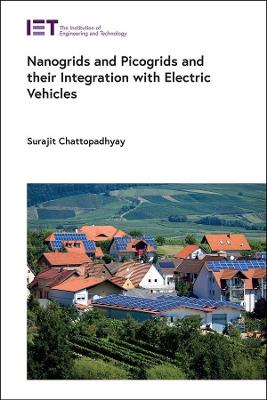Energy Engineering
2 total works
In order to fulfill the tremendous worldwide demand for electrification, power line professionals will need to adopt rapid, reliable and sustainable solutions. For example, in a fast-developing country like India, which had the largest population without electricity in 2014 and 1.34 billion inhabitants in 2017, the demand for electrification is immense. In recent years, a new program facilitated 0.73 million new household connections per month and almost 19,000 villages per year.
Wide-spread experience in geographical, geological, social and economic diversity leaves no doubt that overhead power lines (OHL) are the only way to provide electricity to communities where underground lines are technically unfeasible or too expensive.
This book presents the technology and recent research into OHL in a concise and systematic way.
After brief introductory sections, chapters cover line support, foundation and mechanical sag, corona discharge, overhead line insulators and conductors, earthing and earth wire, lightning and surge protection, insulation and coordination, route selection, commissioning, operation and maintenance.
This book is a must-read for researchers and experts involved with utilities and particularly for anyone associated with the installation, electrification, operation and maintenance of overhead lines in transmission and distribution networks.
Nanogrids and Picogrids and their Integration with Electric Vehicles
by Surajit Chattopadhyay
Nanogrids are small energy grids, powered by various generators often including photovoltaics. For example, a nanogrid might supply a village in a rural area and allow that village to trade its surplus energy. A picogrid is a still smaller energy grid. IRENA defines nanogrids as systems handling up to 5 kW of power while picogrids handle up to 1 kW.
Nanogrids and picogrids can play roles in urban, suburban and rural areas, particularly in developing countries, and can help with decarbonising the energy systems and empowering citizens. Electric vehicles (EV) are poised to play important roles and need to be accounted for in emerging and future small grids.
This book introduces the principles of nano- and picogrids, then goes on to provide a technical analysis covering connected resources, modelling and performance, power quality and protection. The use of nano- and picogrids in conjunction with EV, charger technologies, the IoT, cloud computing and data sharing is explored. Case studies of real-life projects help readers to understand and apply the concepts for their own projects.
Nanogrids and Picogrids and their Integration with Electric Vehicles is a valuable resource for researchers involved with power systems, particularly those with an interest in power supply in rural areas, or anyone with a particular interest in nano- and microgrids. It is also of use to advanced students, and to engineers working in utilities.

